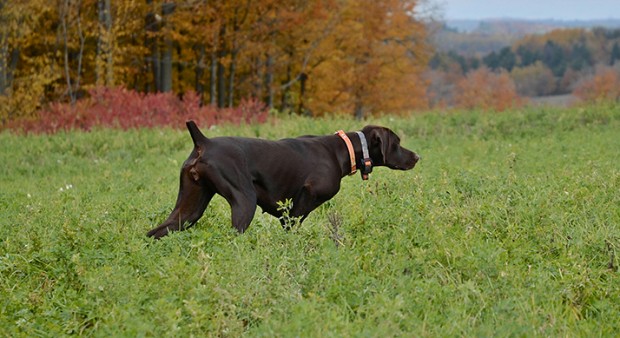
“Here, Penny. Come here, girl. Whoa. Now Whoa!” The panicked expletives started the minute I turned my brittany, Penny, loose to quarter the covert. The problem was, it wasn’t me shouting the commands. It was my hunting partner who had only hunted upland birds over his labs.
He didn’t understand that the range for a pointing dog was vastly different than that of a flushing dog, (but really shouldn’t have been commanding or cautioning my dog at all).
He was used to a very close working dog and thought that a wider ranging dog was going to bump birds before we got in position to shoot. What he didn’t know was that a pointing dog, unlike a flushing dog, will (or should) hold birds on point until the guns arrives for the flush.
Range is simply the distance a dog can effectively hunt from its master, and this will vary from dog to dog, breed to breed.
To my mind, range is simply the distance a dog can effectively hunt from its master, and this will vary from dog to dog, breed to breed.
A dog’s natural range is first dictated by genetics and then molded by handling and training in the field. Each breed has its own general parameters in which it works effectively.
Being mindful of the differences between breeds makes the potential owners more informed and more likely to be pleased with their hunting companion.
Point or flush?
Flusher Retrievers
Flushing dogs, such as retrievers and spaniels, do as their name suggests.
Upon scenting game, they chase and ultimately flush birds. In order to be effective, these dogs must work within a distance of typical shotgun range (10 to 25 yards). If the dog pushes the envelope and starts popping birds up at 35 to 40 yards, the number of missed birds will increase.
The way to train a dog to handle within range is to make sure it’s successful at finding birds in range of the gun during training. Planted birds and solid basic obedience training will convince the dog that if it stays close enough to the shooter, a mouthful of feathers and a retrieve are the reward.
Pointers
Pointing dogs on the other hand can, and should, stretch out the field a bit more. As long as the dog is dependably holding birds until the gun-totting hunter arrives, it can be trusted to reach out a little more.
To ensure that a dog remains steady on point and doesn’t flush birds prematurely, never shoot birds that the dog bumps or flushes.
Soon enough the dog will understand that the only way he gets the reward of a mouthful of feathers is to remain still and hold the bird on the ground until the handler flushes the bird.
Best breed debate
The debate over which breed is best for a particular game bird has gone on for decades and will certainly continue. With that in mind, I suggest for the rough shooter who expects to shoot both upland and waterfowl on a given hunt, one of the flushing/retrieving breeds might be most appropriate choice, flushing/retrieving breeds might be most appropriate choice — a springer spaniel or Labrador, for example.
With training, these breeds work close to the gun and will also be happy to hunker down in a blind while waiting for waterfowl to pitch into the decoys.
If, on the other hand, you like to keep your boots dry and hunt upland birds exclusively, then pointing breeds are a better fit. Pointing dogs have a style and range that add a unique flavour to the hunt. True pointing breeds, such as setters or English pointers, are specialists — as are those who tend to own them.
For those who don’t want their dog to dictate the kind of game they pursue, there are always the dock-tailed Continental breeds, such as German shorthairs, Hungarian vizsla, pudlepointers and even brittanys. Pointing, tracking, and retrieving of upland birds, waterfowl, and furred game is all in a day’s work for these versatile breeds.
The distance your dog works from you is ultimately a matter of choice. Regardless of what breed you prefer or game you hunt, it’s important that you recognize the skills your own dog brings to the field and allow it the room he needs to be effective.


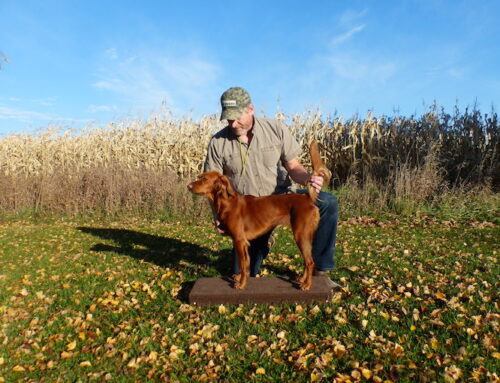
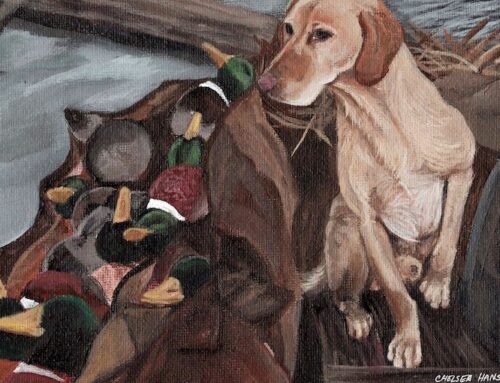
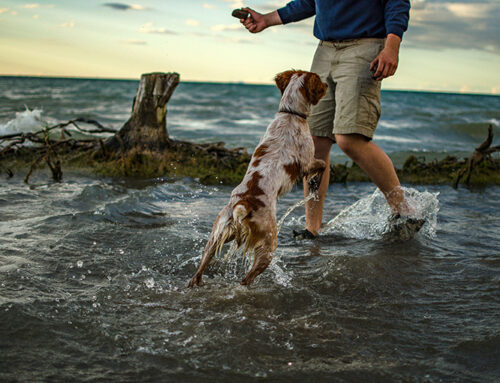
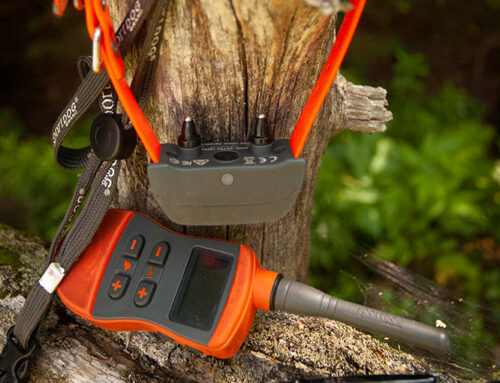
Tom, what an excellent article that should precede the acquisition of a pup for most potential buyers. Just to add a comment, what you offered is so common among bird dog owners today. There is also a misunderstanding in definition of the word “range”. I start out all my pointing dogs to hunt close – very close. It isn’t hard because of when/how I start them. Subsequently, the effective pointing dog will adjust his range to the habitat/species that it develops actual hunting experience in (keeping in mind that it starts out trained to work close). As such, a well bred intelligent bird dog self adjusts (with the guidance of the owner) to be just as effective hunting the prairies as it does dense eastern grouse/woodcock cover. The competent owner will aid in this transition but the bird species (and their numbers) will have the greatest impact. As you stated, birds bumped/flushed over the pointing dog are never shot OR…..shot at!!
Too often, range is misinterpreted for independence. Independence is often more the result of breeding/genetics and can further be heightened by poor ownership/handling. This dog is perfectly happy finding birds for himself/herself rather than being a team player. This further escalates the need to get into this dog’s head and habits as a youngster rather than later on at which point it can be a significant issue to resolve. In some cases it is never truly resolved and requires an expert handler at the helm. Too often, this dog owner hunts dog rather than birds and can turn what was planned as a leisurely fun hunt into a chore – a source of embarrassment dovetailed with frustration. The ride home with this dog can also be a LONG one. :)